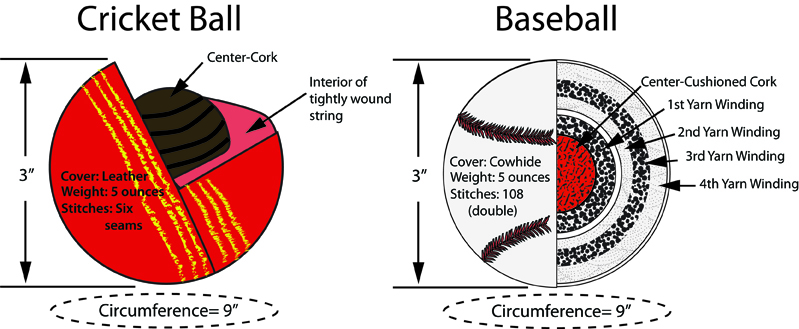As an American, cricket is a foreign concept, but I couldn’t help be attracted to this beautiful red leather cricket ball.
Baseballs have their own charms of course, especially used ones covered in clay from the pitch but to my eyes the red cricket ball was something exotic and different. I’ve seen decorators using them in bowls displayed like the old wax fruit of old.
Here are some differences between cricket balls and baseballs beyond appearances:
A major element of strategy in these sports is the condition of the ball. Since bowling in cricket has more variations (such as bounce, swing, seam movement, off-spin, leg-spin and so on), the condition of the ball also affects play to a great degree. In Test cricket, the same ball must be used for at least 80 overs unless it is lost, damaged or illegally modified and then it must be replaced with a ball in a similar condition. After the 80 overs, obtaining a new ball is at the discretion of the fielding captain — who will often ask for a new ball immediately, since a new ball is harder, bounces higher and has an intact seam, which produces greater conventional swing. But when a captain feels that a spin bowling attack is more likely to be successful, he will persist with the old ball, which is rougher and better grips the surface as well the bowler’s fingers. In baseball the ball is replaced numerous times during a game to ensure it is in optimum condition.
Inside the baseball and cricket ball are also very different:

Edward M. Fielding is a fine art photographer, designer and visual artist working in the Upper Valley region of New Hampshire. Prints of his work are available at: http://www.edwardfielding.com